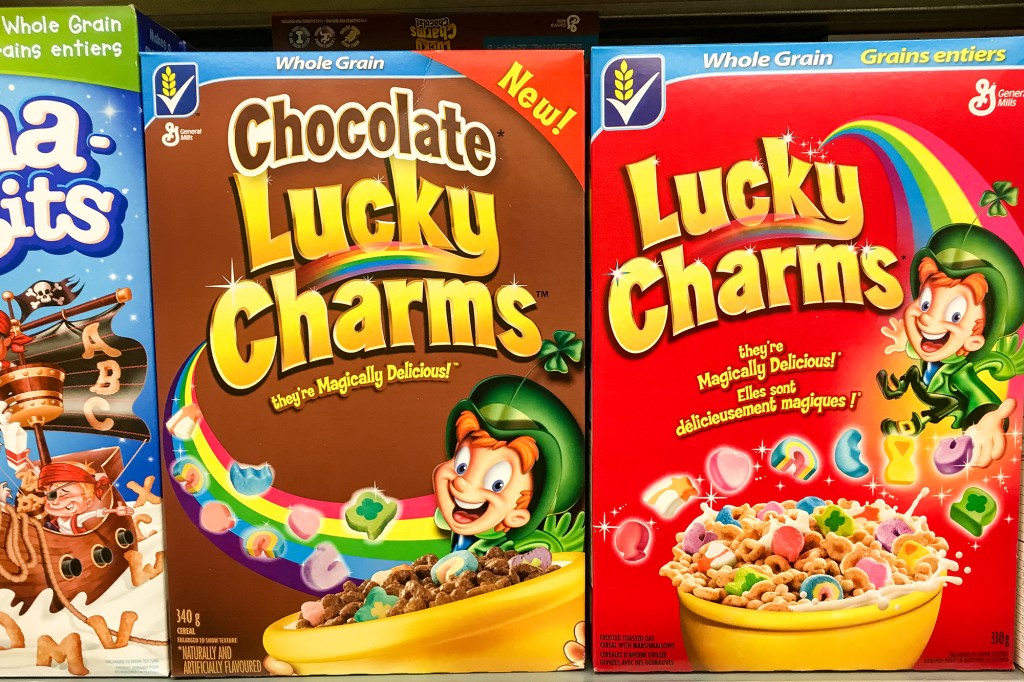FDA ends Lucky Charms probe despite continued reports of bizarre symptoms
The feds have quietly closed an investigation into illnesses caused by Lucky Charms, even as customers continue to report bizarre symptoms after eating the sugary breakfast cereal — including poop that turned “bright neon green,” The Post has learned.
The Food and Drug Administration said in a statement posted to its website this week that it has ended the probe it began in April of the General Mills cereal after finding “no pathogen or cause of the self-reported illnesses identified, despite extensive testing for numerous potential microbial and chemical adulterants.”
That’s despite the fact that last month some 79 people reported becoming ill after eating Lucky Charms, bringing the total number of reported victims this year to 8,633, according to iwaspoisoned.com, a platform for reporting food related illnesses.
“My poop became increasingly green and watery until it reached a bright neon green,” a customer from Teaneck, NJ reported on the site on Aug. 21, claiming the bizarre symptoms persisted for three days after eating a single bowl of Lucky Charms.
“My son had severe stomach pain within 20 minutes of eating a small bowl of Lucky Charms,” a West Virginia parent wrote on the website Aug. 7. “The pain was so severe and he became so pale, I thought he was experiencing appendicitis since the pain was moving from middle abdomen to right abdomen. Nearly ended up going to the emergency department.”

Another customer from Arizona wrote a day later, “I ate 2 small bowls of Lucky Charms last night and then went to bed. I’ve been suffering with vomiting, nausea, green diarrhea, stomach cramps/pain all morning and had a rough night trying to sleep.”
The FDA started its investigation after some 100 consumers initially reported illnesses to the federal agency. That number rose to 529 in early May, but the total was only 558 at the end of the probe, suggesting that the probe may have been closed because of a sharp slowdown in reported cases, experts said.
While it’s not clear what is causing the illnesses, experts believe the FDA focused on chemical additives to the cereal.
“I’ve heard the FDA was testing for chemical contaminants in food,” Lee-Ann Jaykus, a professor of food, bioprocessing, and nutrition sciences at North Carolina State University who has been studying the case, told The Post.
“The concentration of a chemical contaminant is usually low and even if it’s there it’s like pulling a needle in the haystack,” Jaykus added. “I don’t think anyone was terribly surprised that they didn’t find anything.”
Still, the fact that the investigation ended and people continue to report getting sick from the cereal is confusing to the public, said Hal King, founder of consulting firm Public Health Innovations.
“Even though [the FDA] didn’t find a smoking gun, it would be nice to know whether the cereal is considered safe to eat,” King told The Post. “If people are still reporting an illness and they can’t define what it is, you and I would question why are people still reporting this and what’s the government’s role in investigating this.”
A spokesperson for the agency declined to comment specifically on the investigation.
“An FDA investigator may visit the person who made the complaint, collect product samples, and initiate inspections,” the spokesperson said in a statement. “Complaints of a less serious nature or those that appear to be isolated incidents are monitored and the information may be used during a future inspection of a company to help the FDA identify problem areas in a production plant. The complaints are also discussed with the company management.”
General Mills spokesperson Andrea Williams told The Post in a statement, “We have fully cooperated with the FDA,” adding “We have investigated concerns across our Lucky Charms manufacturing facilities and have not found any evidence of consumer illness tied to our products.”